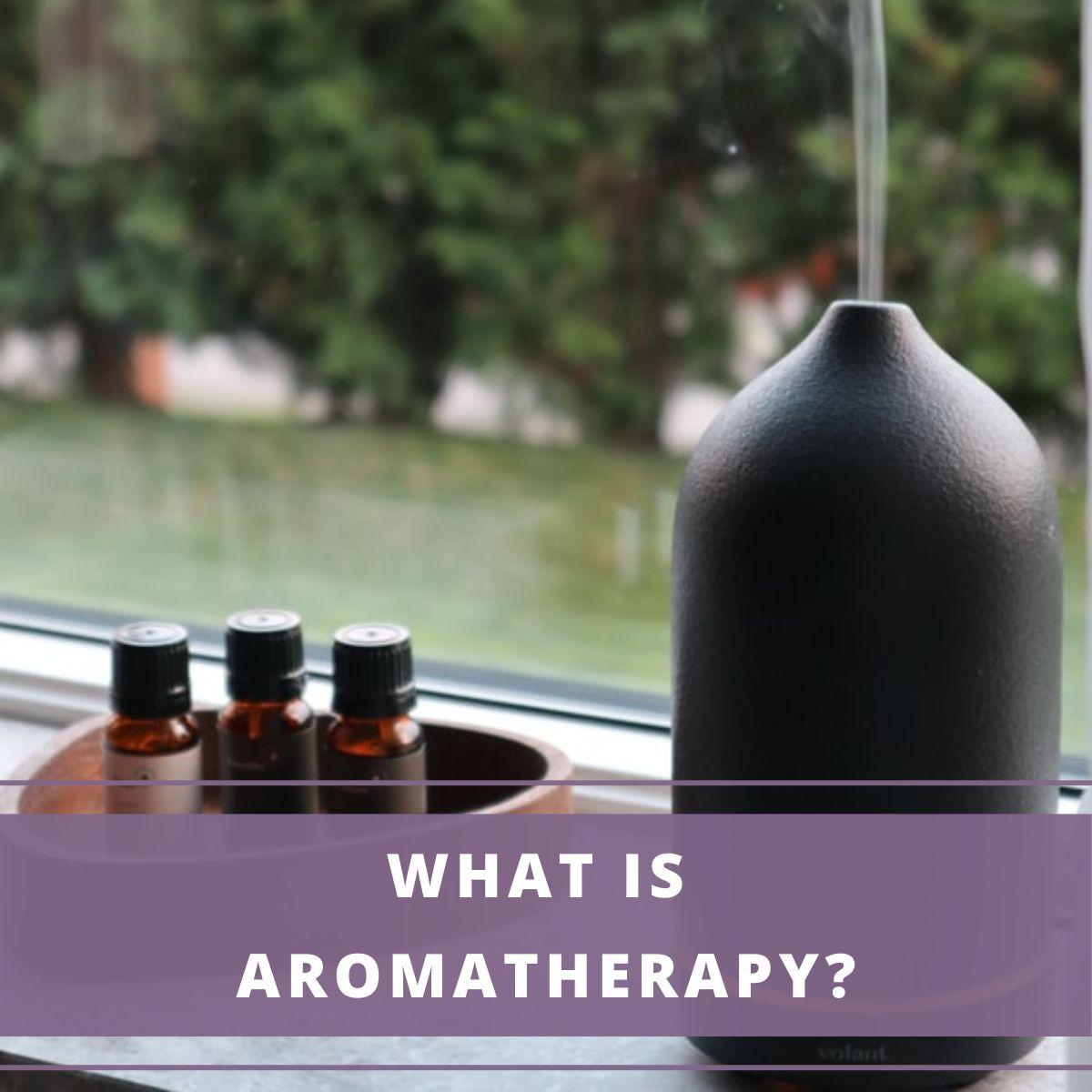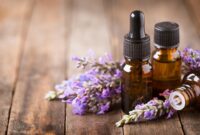How does aromatherapy work? Embark on a journey to unravel the intriguing world of aromatherapy, an ancient practice that harnesses the power of essential oils to promote well-being. Discover how these fragrant compounds interact with our bodies and minds, offering a holistic approach to health and relaxation.
From inhalation to topical application, aromatherapy’s versatility empowers us to experience its benefits in various ways. Explore the scientific evidence behind its effectiveness, delving into the intricate pathways through which essential oils exert their therapeutic effects.
Introduction

Aromatherapy is the use of essential oils, which are concentrated plant oils, for therapeutic purposes. It has been practiced for centuries, with origins in ancient Egypt, China, and India.
Aromatherapy can be used in various ways, including:
- Inhalation: Essential oils can be inhaled through a diffuser, humidifier, or by simply smelling them from the bottle.
- Topical application: Essential oils can be diluted with a carrier oil and applied to the skin.
- Bath: Essential oils can be added to a bath to create a relaxing or invigorating experience.
- Massage: Essential oils can be added to massage oil to promote relaxation or relieve muscle tension.
Essential Oils and Their Properties

Essential oils are highly concentrated, volatile liquids extracted from plants through various methods like steam distillation, cold pressing, or solvent extraction. They contain a complex blend of chemical compounds, including terpenes, esters, and phenols, that give them their characteristic aromas and therapeutic properties.
The chemical composition of essential oils varies greatly depending on the plant species, growth conditions, and extraction methods. This variation in chemical structure influences their therapeutic effects, making each oil unique in its properties and applications.
Common Essential Oils and Their Therapeutic Properties
The following table lists some common essential oils, their chemical composition, and their therapeutic properties:
| Essential Oil | Chemical Composition | Therapeutic Properties |
|---|---|---|
| Lavender | Linalool, linalyl acetate | Calming, relaxing, pain-relieving |
| Peppermint | Menthol, menthone | Stimulating, invigorating, headache relief |
| Tea Tree | Terpinen-4-ol, α-terpineol | Antibacterial, antifungal, acne treatment |
| Eucalyptus | Eucalyptol, α-pinene | Decongestant, expectorant, respiratory support |
| Lemon | Limonene, β-pinene | Antiseptic, mood-boosting, cleansing |
| Frankincense | Boswellic acid, α-pinene | Anti-inflammatory, pain-relieving, wound healing |
| Ylang-Ylang | Linalool, geranyl acetate | Relaxing, mood-enhancing, aphrodisiac |
| Rosemary | Camphor, 1,8-cineole | Stimulating, memory-enhancing, hair growth |
How Aromatherapy Works

Aromatherapy’s effects on the body and mind are attributed to the unique interactions between essential oils and the human physiology. The olfactory system plays a crucial role in this process, providing a direct pathway for essential oil molecules to reach the brain and influence various bodily functions.
Essential oils contain a complex blend of volatile organic compounds (VOCs) that are easily absorbed through the skin and respiratory tract. Once absorbed, these VOCs interact with the body’s physiology and biochemistry, triggering a cascade of physiological and psychological responses.
The Olfactory System
The olfactory system is a specialized sensory system responsible for detecting and interpreting scents. When we inhale essential oils, their VOCs travel through the nasal cavity and bind to receptors in the olfactory bulb. These receptors then send signals to the olfactory cortex, which processes the scent information and triggers appropriate responses.
- Activation of the Limbic System:The olfactory cortex has direct connections to the limbic system, a complex network of brain structures involved in emotions, memory, and behavior. Aromatherapy can thus directly influence our emotional state and behavior.
- Stimulation of the Hypothalamus:The olfactory bulb also sends signals to the hypothalamus, which regulates the body’s endocrine system and controls functions such as hormone secretion, sleep, and appetite.
Methods of Aromatherapy
Aromatherapy is a complementary therapy that uses essential oils to promote relaxation, improve mood, and alleviate various health conditions. Essential oils can be used in different ways, each with its unique benefits and safety considerations.
The following are the most common methods of aromatherapy:
Inhalation
Inhalation is the most direct way to experience the benefits of essential oils. When inhaled, the volatile compounds in essential oils travel through the nasal passages and are absorbed into the bloodstream. This method is effective for promoting relaxation, reducing stress, and improving mood.
There are several ways to inhale essential oils:
- Diffusion:Diffusers disperse essential oils into the air, creating a fragrant atmosphere. This method is ideal for large areas or for continuous use.
- Steam inhalation:Adding a few drops of essential oil to hot water and inhaling the steam can help clear congestion and promote relaxation.
- Nasal inhalation:Inhaling essential oils directly from the bottle or using an inhaler can provide a quick and concentrated dose of the oil’s benefits.
Topical Application
Topical application involves applying essential oils directly to the skin. This method is effective for treating skin conditions, reducing muscle pain, and promoting relaxation.
When applying essential oils topically, it is important to dilute them with a carrier oil, such as jojoba oil or coconut oil. This helps to prevent skin irritation and ensures even distribution of the oil.
There are several ways to apply essential oils topically:
- Massage:Mixing essential oils with a carrier oil and massaging it into the skin can help to relieve muscle pain and tension.
- Baths:Adding a few drops of essential oil to a warm bath can create a relaxing and therapeutic experience.
- Compresses:Applying a compress soaked in essential oil-infused water to the skin can help to reduce inflammation and promote healing.
Diffusion, How does aromatherapy work
Diffusion is a method of dispersing essential oils into the air using a diffuser. Diffusers use heat or ultrasonic vibrations to create a fine mist of essential oil particles that can be easily inhaled.
Diffusion is a convenient and effective way to experience the benefits of essential oils in a large area. It is also a good option for people who are sensitive to strong scents or who have skin conditions that make topical application difficult.
When using a diffuser, it is important to follow the manufacturer’s instructions carefully and to use only high-quality essential oils. Some essential oils can be harmful if they are inhaled in large quantities or if they are not diluted properly.
Applications of Aromatherapy: How Does Aromatherapy Work
Aromatherapy has gained popularity as a complementary therapy for various health conditions. Its applications range from stress and anxiety relief to sleep disorders and pain management. Scientific evidence supports the efficacy of aromatherapy in these areas, with studies demonstrating its positive effects on both physical and mental well-being.
Stress and Anxiety
- Aromatherapy can help reduce stress and anxiety levels by promoting relaxation and calming the nervous system.
- Essential oils like lavender, chamomile, and bergamot have been shown to have sedative and anxiolytic properties.
- Studies have found that inhaling these oils can lower cortisol levels, a hormone associated with stress.
Sleep Disorders
- Aromatherapy can improve sleep quality by promoting relaxation and reducing sleep disturbances.
- Essential oils like lavender, chamomile, and valerian root have been found to have sleep-inducing effects.
- Research suggests that inhaling these oils before bedtime can increase sleep duration and reduce sleep latency.
Pain Management
- Aromatherapy has been used for centuries to relieve pain and discomfort.
- Essential oils like peppermint, eucalyptus, and rosemary have analgesic and anti-inflammatory properties.
- Studies have shown that topical application or inhalation of these oils can reduce pain intensity and improve mobility in conditions like headaches, muscle pain, and arthritis.
Safety Considerations

While aromatherapy offers numerous benefits, it is crucial to be aware of potential risks and contraindications associated with essential oils. Proper usage and adherence to safety guidelines ensure a positive and safe experience.
Certain essential oils may cause skin irritation or allergic reactions in some individuals. It is recommended to perform a patch test before applying essential oils to larger areas of the skin. Pregnant women, nursing mothers, and children should consult a healthcare professional before using essential oils, as some may be contraindicated or require specific precautions.
Dosage Recommendations
- For topical use, essential oils should be diluted in a carrier oil, such as jojoba, coconut, or almond oil. The recommended dilution ratio is typically 2-3 drops of essential oil per 10 ml of carrier oil.
- For inhalation, essential oils can be diffused using an aromatherapy diffuser. Follow the manufacturer’s instructions for the specific diffuser and essential oil being used.
- For oral use, essential oils should only be taken under the guidance of a qualified healthcare professional. Ingesting essential oils without proper supervision can be dangerous.
Precautions for Pregnant Women and Children
- Pregnant women should avoid certain essential oils, such as basil, rosemary, and sage, as they may stimulate uterine contractions.
- Children are more sensitive to essential oils than adults. It is recommended to use lower concentrations of essential oils and to avoid applying them directly to the skin of children under the age of 6.
Summary
Aromatherapy’s versatility extends beyond its applications, offering a safe and natural way to address a wide range of health concerns. Its ability to influence our physical and emotional well-being makes it a valuable tool for holistic practitioners and individuals seeking alternative therapies.
Embrace the power of aromatherapy and harness its therapeutic potential to enhance your overall health and well-being.
FAQs
What are the different methods of aromatherapy?
Aromatherapy can be practiced through inhalation, topical application, diffusion, and even bathing.
How do essential oils interact with the body?
Essential oils are absorbed through the skin or inhaled into the lungs, where they interact with the body’s physiology and biochemistry, influencing mood, stress levels, and physical well-being.


